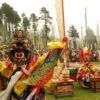Gangtok, the capital of Sikkim, is known for its beautiful views and vibrant culture. This city offers diverse experiences, from peaceful monasteries to thrilling adventure activities. In this blog, we list the top 10 Gangtok tourist attractions you must visit. Whether you love nature, history, or adventure, Gangtok has something for everyone. Get ready to explore the best places and plan your next trip to this stunning destination.
MG Marg: The Heart of Gangtok
If you’re visiting Gangtok, MG Marg is a must-do. This pedestrian-only street is the heart of the city, buzzing with life and filled with tons of cool stuff to do.
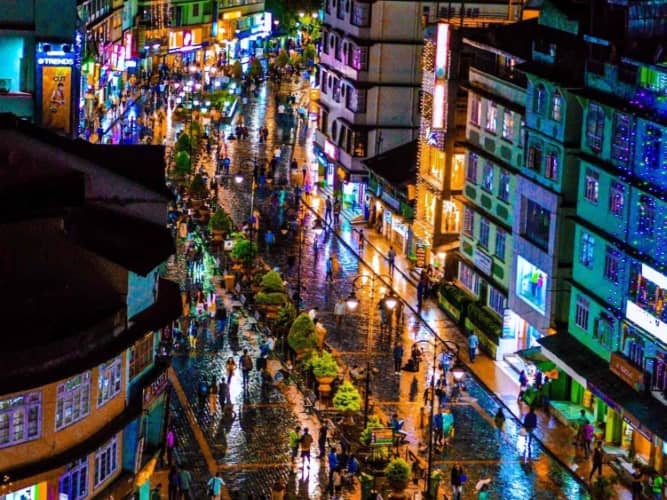
Why Visit MG Marg?
- Shopping: Looking for souvenirs or just want to do some retail therapy? MG Marg has got you covered. You’ll find everything from local handicrafts to international brands. Pick up a traditional Sikkimese shawl, some handmade jewelry, or even a cool t-shirt to remember your trip.
- Food: Craving some local flavor? MG Marg is the place to be. Try out the delicious momos, thukpa, and other Sikkimese specialties. If you’re feeling adventurous, there are also plenty of international options to choose from.
- Culture: Want to experience the local culture? MG Marg is a great spot. Check out the street performers, grab a cup of tea at a cozy cafe, or just people-watch and soak up the atmosphere.
- Nightlife: Looking for a fun night out? MG Marg comes alive after dark. There are plenty of bars and pubs with live music, dancing, and a great vibe.
So, whether you’re a shopaholic, foodie, or just want to experience the local culture, MG Marg is a must-visit destination in Gangtok.
Tsomgo Lake: A Stunning Gem Among Gangtok Tourist Attractions
Tsomgo Lake, also known as Changu Lake, is one of the most breathtaking Gangtok tourist attractions. Located about 40 kilometers from Gangtok, this glacial lake sits at an altitude of 12,400 feet. The lake’s crystal-clear waters reflect the surrounding snow-capped mountains, creating a mesmerizing view.
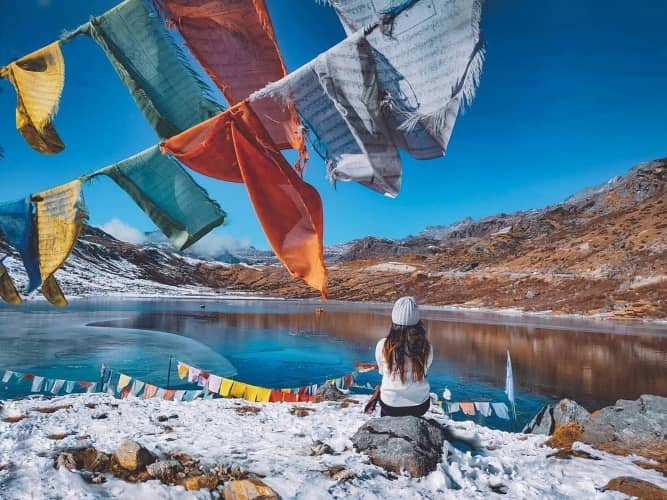
How to Reach Tsomgo Lake
To reach Tsomgo Lake, you can hire a taxi from Gangtok. The journey takes around 2-3 hours along winding mountain roads with spectacular views. Remember, a permit is needed to visit Tsomgo Lake, which can be arranged through your hotel or a local travel agent.
What to Do at Tsomgo Lake
At Tsomgo Lake, you can enjoy yak rides around the lake’s perimeter. During winter, the lake freezes, offering a magical setting. You can also enjoy hot tea and local snacks from nearby stalls while taking in the serene surroundings. Enjoy a ropeway ride, which will take you 1000 feet above the lake. In Spring and Summer, the lake’s crystal-clear waters and majestic mountain backdrop create a mesmerizing landscape.
Tips for Visiting Tsomgo Lake
Dress warmly, as temperatures can drop significantly. Carry sunglasses and sunscreen, as the snow can reflect the sun’s rays. Visiting early in the day is recommended to avoid crowds and enjoy the peaceful atmosphere. If possible, combine your trip with a visit to Baba Mandir and Nathula Pass for a full-day excursion. The lake is accessible from March to May, and September to December. It is advisable to avoid the monsoons. Keep the area clean and avoid littering.
Baba Mandir: A Must-Visit Gangtok Tourist Attraction
Baba Mandir, located at 13,200 feet, is one of the top Gangtok tourist attractions. Dedicated to Baba Harbhajan Singh, an Indian Army soldier, the temple holds a special place in the hearts of locals and soldiers alike. Legend says Baba’s spirit protects soldiers at the border.
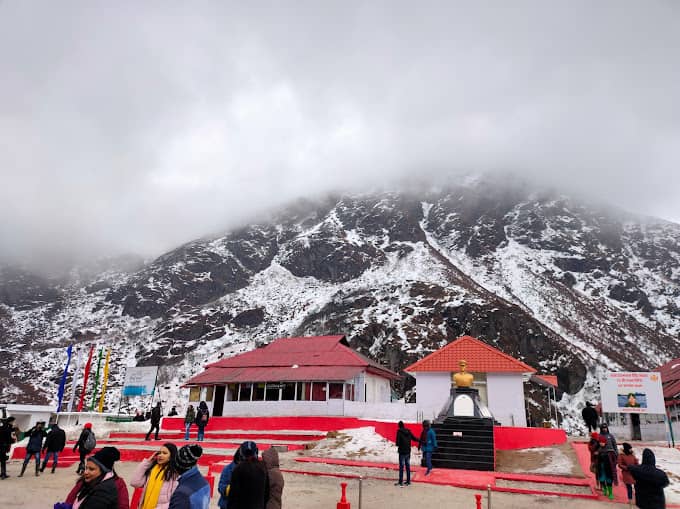
Reaching Baba Mandir
To visit Baba Mandir, you’ll need to hire a taxi from Gangtok. The scenic drive takes around 3 to 4 hours. Remember to carry warm clothing, as it gets quite cold at this altitude. Permits are required and can be obtained from the Sikkim Tourism Office or through a travel agent.
What to See at Baba Mandir
The temple is simple but filled with spiritual significance. You can see Baba Harbhajan Singh’s photo, his belongings, and a shrine where devotees make offerings.
Tips for Your Visit
Dress warmly, stay hydrated, and move slowly due to the high altitude. Photography is allowed, but respect the temple’s religious environment. Consider visiting nearby attractions like Tsomgo Lake and Nathula Pass for more breathtaking views.
Nathu La: A Historic and Scenic Pass
Located at 14140 feet, Nathu la or Nathula is Indo-China Border. It is one of the highest motorable roads. Known for its strategic importance and stunning landscapes, Nathu La offers visitors a mix of natural beauty and historical significance. It is one of the most visited place among the tourist attractions near Gangtok.
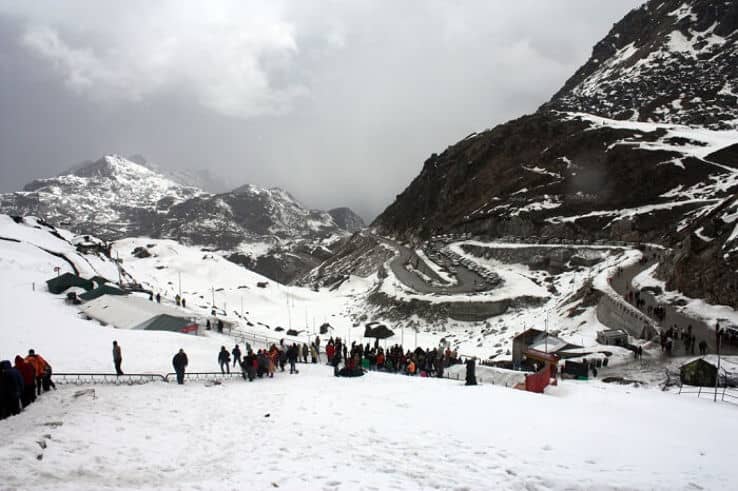
How to Reach Nathu La
Nathu La is about 58 kilometers from Gangtok, and the journey takes approximately 3 hours by road. To visit Nathu La, you’ll need a special permit, which can be arranged by local travel agency in Gangtok. The road to Nathu La is narrow and winding, offering panoramic views of the Eastern Himalayas along the way. Visit Tsomgo Lake on the way
What to Do at Nathu La
At Nathu La, you can witness the Indo-China border and see soldiers from both countries guarding their posts. The pass is a site of historical significance, as it was part of the ancient Silk Route and reopened in 2006 for trade. The cool breeze and the sight of snow-covered mountains create a memorable experience. Don’t miss visiting the nearby war memorial dedicated to Indian soldiers and the beautiful Baba Mandir, which is just a short drive away.
Tips for Visiting Nathu La
Be prepared for cold weather, as temperatures can drop even in summer. It’s advisable to wear warm clothing and comfortable shoes. Carry snacks and water, as facilities are limited at the pass. Due to high altitude, some visitors may experience mild altitude sickness, so acclimatize in Gangtok before visiting. Plan your trip early in the day to avoid road closures due to weather conditions.
Rumtek Monastery: A Spiritual and Cultural Gem
Rumtek Monastery or the Dharma Chakra Centre is the largest monastery in Sikkim. The monastery is almost a replica of Tsurphu Monastery, Tibet. Located around 22 kilometers from Gangtok, this monastery is a must-visit among Gangtok tourist attractions. Known for its stunning architecture and serene surroundings, Rumtek Monastery offers visitors a glimpse into Sikkim’s rich Buddhist culture and heritage.
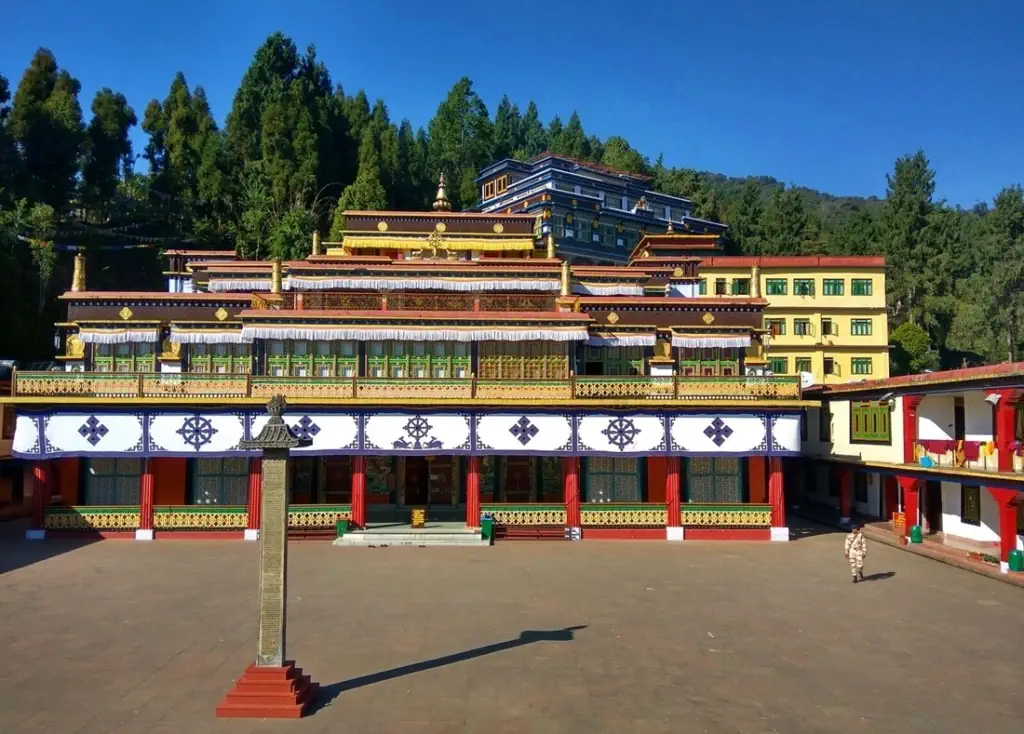
How to Reach Rumtek Monastery
Reaching Rumtek Monastery from Gangtok is easy and convenient. It takes about 45 minutes to an hour by car to cover the scenic drive through winding mountain roads. You can hire a taxi or book a guided tour from Gangtok to reach the monastery. The journey offers breathtaking views of the valley, making the drive enjoyable.
What to Do at Rumtek Monastery
Rumtek Monastery is a beautiful place to explore and offers a peaceful atmosphere for meditation and reflection. The monastery is home to sacred artifacts, ancient manuscripts, and vibrant wall paintings depicting Buddhist teachings. You can witness the monks performing daily rituals and ceremonies. The monastery’s Golden Stupa, which contains the relics of the 16th Karmapa, is a significant attraction. Don’t miss the stunning views of Gangtok and the surrounding mountains from the monastery grounds. In December, Losoong and Kagyed Dance are celebrated in Rumtek monastery.
Near Rumtek Monastery, there is another spot, called, “Jawaharlal Nehru Botanical Garden”. It is a landscaped garden with a variety of flowers and water fountains. spend some time here if you visit Rumtek Monastery.
Banjhakri Falls
Banjhakri Falls is one of the major tourist attractions of Gangtok. Nestled amidst lush greenery on the outskirts of Gangtok, Sikkim. Cascading from a height of 100 feet, the falls create a mesmerizing display of water gushing down rugged rocks, surrounded by an exquisitely landscaped park. The name “Banjhakri” translates to “Jungle Shaman” in Nepali folklore, and the site is rich in mythological significance, believed to be the dwelling place of the Ban Jhakri, a shamanic spirit. The park around the falls features sculptures and themes that pay homage to Sikkimese shamanic traditions, offering visitors a unique blend of nature and culture. Its serene environment and picturesque beauty make it a perfect spot for nature enthusiasts and photographers.
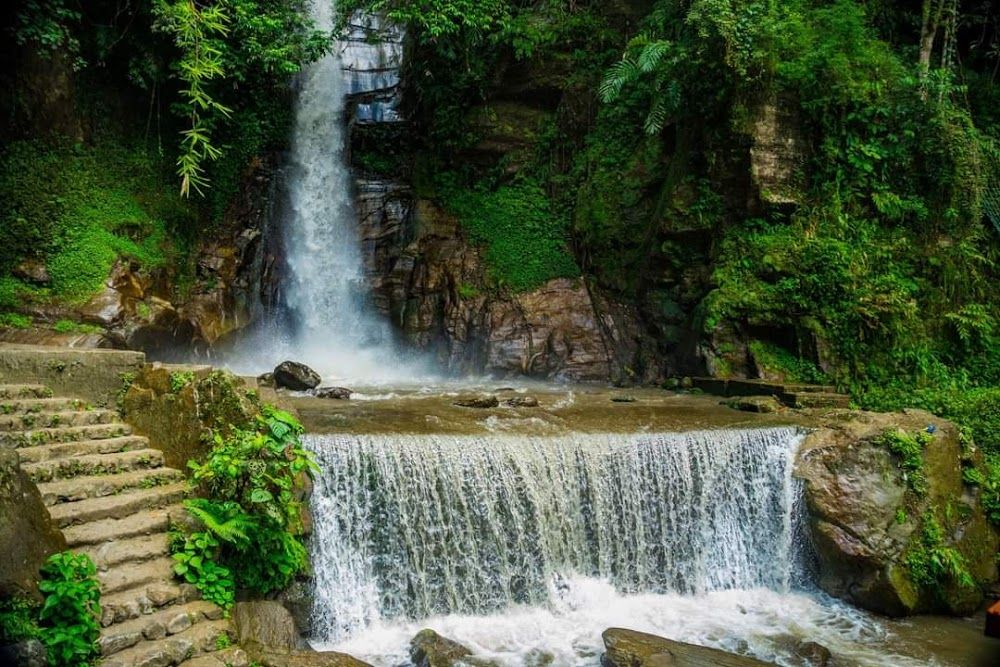
How to Reach Banjhakri Falls
Reaching Banjhakri Falls is relatively easy and convenient for travelers visiting Gangtok. The falls are located approximately 7 kilometers from Gangtok city center, making it a quick 20-30 minute drive. Visitors can hire local taxis or rent private vehicles to reach the destination. The road leading to the falls is well-maintained, offering a pleasant drive through scenic landscapes. For those relying on public transport, shared cabs from Gangtok may also be an option, although private transport is recommended for comfort and flexibility. The site is easily accessible, with a short and straightforward walk from the parking area to the falls.
What to Do at Banjhakri Falls
Banjhakri Falls offers more than just the sight of cascading water. Visitors can explore the beautifully maintained park, which features traditional sculptures and shrines that reflect Sikkimese folklore. Adventure seekers can enjoy the ropeway rides and small trekking trails within the park. There are also dedicated picnic spots where families and groups can relax and enjoy the surroundings. The sound of the gushing water, combined with the chirping of birds, creates a tranquil ambiance that is perfect for meditation or simply unwinding. Don’t forget to bring a camera to capture the breathtaking views and the intricate cultural elements that make Banjhakri Falls a unique attraction.
Gangtok Ropeway
The Gangtok Ropeway, also known as the Deorali Cable Car, is one of the most popular attractions in the capital city of Sikkim. Offering breathtaking aerial views of the cityscape, lush green valleys, and the majestic Kanchenjunga range, this cable car ride is a must-experience for travelers. The ropeway spans a total distance of about one kilometer and connects three terminals: Deorali (lower station), Namnang (mid-station), and Tashiling (upper station). This thrilling yet serene ride provides visitors with a bird’s-eye view of Gangtok’s beauty, making it a favorite among tourists and photographers alike.
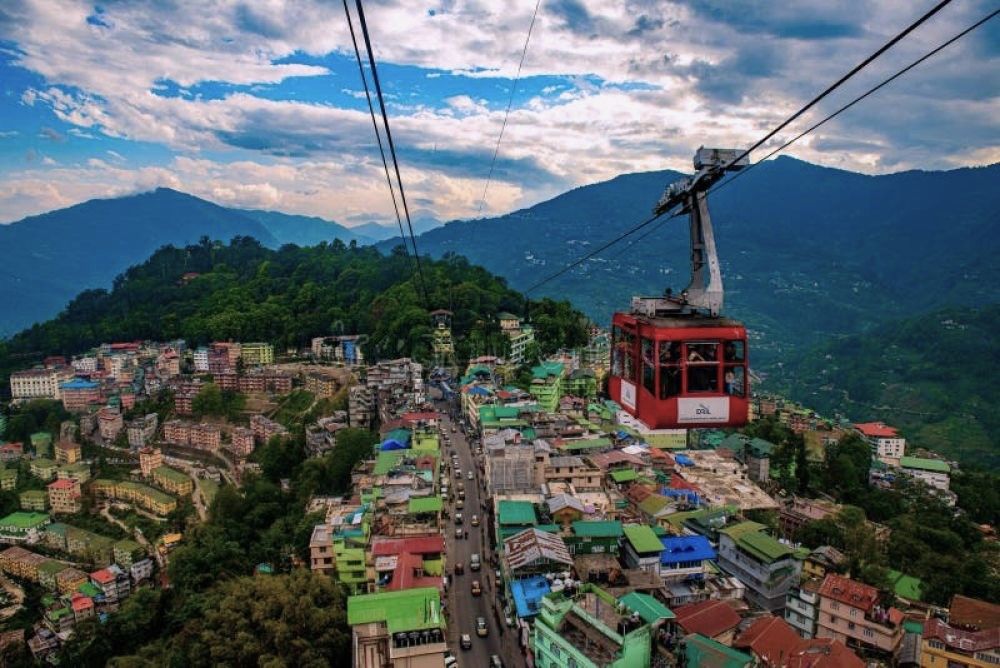
What to Expect on the Ride
As you ascend in the ropeway, you are greeted with panoramic views that grow more magnificent with each passing second. The ride offers a unique perspective of Gangtok, with its colorful houses perched on hillsides, winding roads, and lush greenery stretching into the horizon. On a clear day, the snow-capped peaks of Kanchenjunga form a stunning backdrop, making the journey even more captivating. Each cabin is spacious and accommodates up to 24 passengers, ensuring a comfortable experience for families and groups. The gentle sway of the cable car adds an element of excitement, especially for first-time riders.
Tips for Visitors
To make the most of your Gangtok Ropeway experience, plan your visit early in the day to avoid long queues, as it is a highly sought-after attraction. Opt for a clear weather day for the best views of the Kanchenjunga range and the surrounding landscapes. Don’t forget to bring your camera or smartphone to capture the awe-inspiring sights during the ride. The ropeway terminals are easily accessible by local taxis, and the Deorali station is located near the main town area. After the ride, you can explore nearby attractions or visit the bustling MG Marg for some shopping and local delicacies.
Bakthang Waterfalls
Bakthang Falls, a serene and picturesque waterfall located just 3 kilometers from Gangtok, is a popular spot for both locals and tourists. The name “Bakthang” translates to “spread of forest” in the local dialect, perfectly describing the lush greenery that surrounds the cascading waters. This natural waterfall originates from the Ratey Chu river and flows down gently over the rocky cliffs, creating a stunning curtain of water. Its accessibility and tranquil ambiance make it an ideal stop for those exploring the outskirts of Gangtok, offering a refreshing escape into nature.
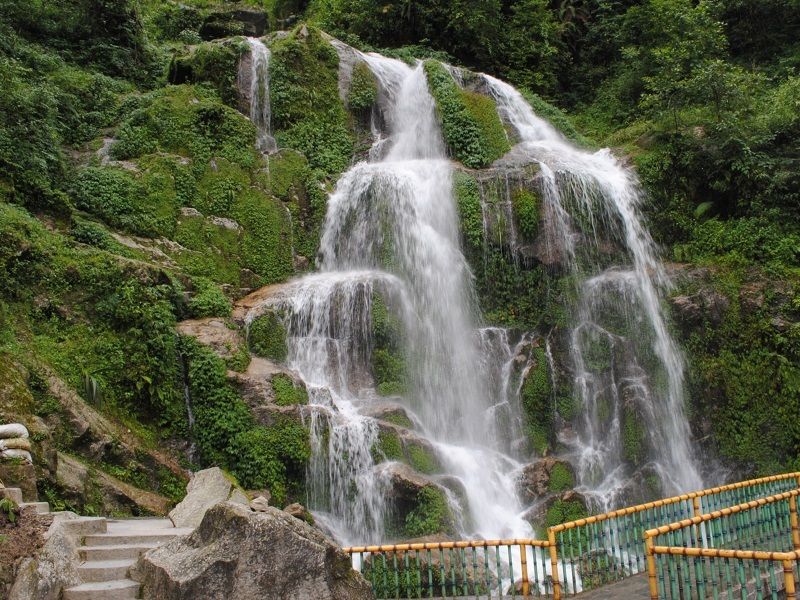
What to Do at Bakthang Falls
Visitors to Bakthang Falls can enjoy more than just the soothing sight of the waterfall. The site offers opportunities for adventure enthusiasts, with activities like rope sliding and basic rock climbing adding a touch of excitement. The surrounding area features well-maintained seating spots, making it a great place for a short picnic or to simply relax while listening to the sound of cascading water. The natural beauty and calming vibe of the falls also make it a favored spot for photography. Don’t miss the chance to capture the ethereal charm of the water against the lush green backdrop.
How to Make the Most of Your Visit
Bakthang Falls is easily accessible via a short drive from Gangtok, making it a convenient stop for those exploring nearby attractions. Visitors can hire taxis or private vehicles to reach the site. Plan your visit during the morning or early afternoon for the best lighting and fewer crowds. The area around the falls also features small eateries and tea stalls where you can enjoy a warm cup of tea while taking in the scenic views. A visit to Bakthang Falls is not only a visual treat but also a rejuvenating experience for nature lovers.
Flower Exhibition Centre
The Flower Exhibition Centre in Gangtok is a vibrant attraction that showcases the rich and diverse flora of Sikkim. Located near Ridge Park, this charming greenhouse hosts a spectacular collection of flowers, plants, and orchids that thrive in the region’s unique climate. Open throughout the year, the center comes alive during the annual flower show, typically held in the spring, where visitors can marvel at an array of rare and exotic blooms. The exhibition is not just a feast for the eyes but also an opportunity to appreciate Sikkim’s biodiversity and horticultural heritage.
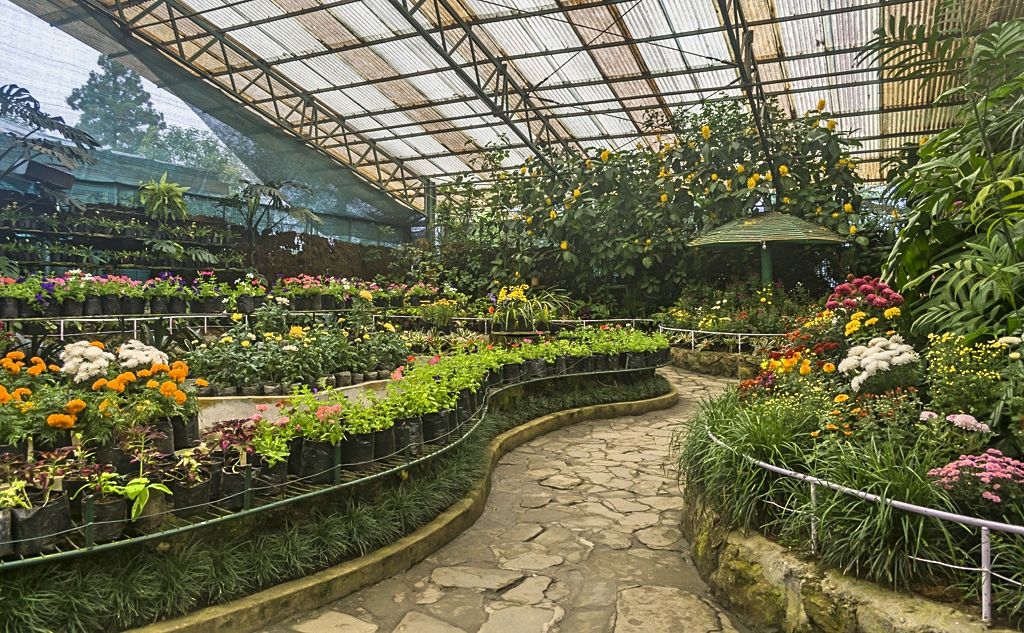
What to See at the Flower Exhibition Centre
Inside the centre, visitors can explore a dazzling variety of flowers, including roses, marigolds, and rhododendrons, along with an impressive collection of orchids, for which Sikkim is famous. The well-organized displays and vibrant arrangements make for a visually enchanting experience. Informative labels accompany many of the plants, making the visit educational for botany enthusiasts. The center also features fountains and landscaped walkways that add to its aesthetic charm. During the peak flowering season, the air is filled with the delightful fragrance of fresh blooms, creating a serene and immersive experience.
Tips for Visitors
The Flower Exhibition Centre is located in the heart of Gangtok, making it easily accessible by foot or a short taxi ride. To make the most of your visit, plan to spend an hour or two exploring the various displays. If possible, time your trip to coincide with the annual flower show, which showcases the most diverse and vibrant collection of flowers. Photography enthusiasts should bring their cameras to capture the colorful blooms and intricate details of the plants. The nearby Ridge Park and White Memorial Hall are worth exploring as part of a leisurely day in Gangtok’s scenic surroundings.
Tashi View Point
Tashi View Point, located about 8 kilometers from Gangtok, is one of the most popular attractions in Sikkim, offering breathtaking views of the Kanchenjunga and Siniolchu peaks. Built by Tashi Namgyal, the former king of Sikkim, the viewpoint is a haven for nature lovers and photography enthusiasts. On clear mornings, visitors are treated to a magnificent panorama of snow-capped peaks glowing in the golden light of sunrise. The tranquil environment and stunning vistas make Tashi View Point a must-visit spot for those exploring the natural beauty of Gangtok.
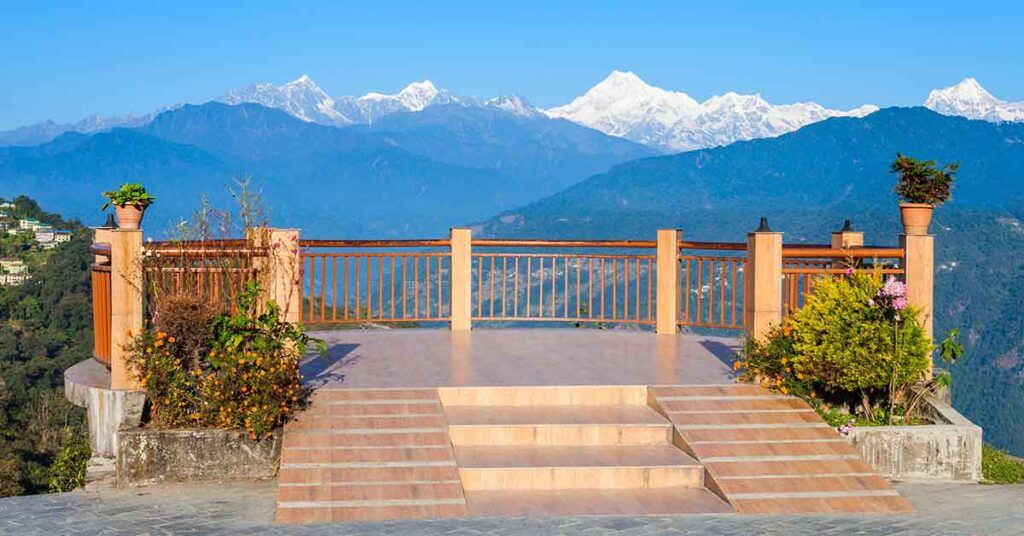
What to Do at Tashi View Point
Besides admiring the majestic Himalayan peaks, visitors can also explore the surrounding landscape using telescopes installed at the site for a closer look at the distant mountains and valleys. The viewpoint is beautifully landscaped, featuring manicured gardens and ample seating areas where visitors can relax and soak in the views. Early risers can witness a mesmerizing sunrise over the Kanchenjunga range, a moment that feels almost spiritual in its beauty. Souvenir shops near the viewpoint offer locally made handicrafts, perfect for picking up a memento of your trip.
Tips for Visitors
The best time to visit Tashi View Point is early morning on a clear day for unobstructed views of the mountains. Carry warm clothing as the area can be chilly, especially in the morning. Taxis are readily available from Gangtok to reach the viewpoint, making it an easy addition to your itinerary. Photography enthusiasts should come prepared to capture the stunning landscapes, and families can enjoy a leisurely outing at this serene location. Pair your visit with a stop at nearby attractions like Ganesh Tok for a more enriching experience of Gangtok’s scenic beauty.

